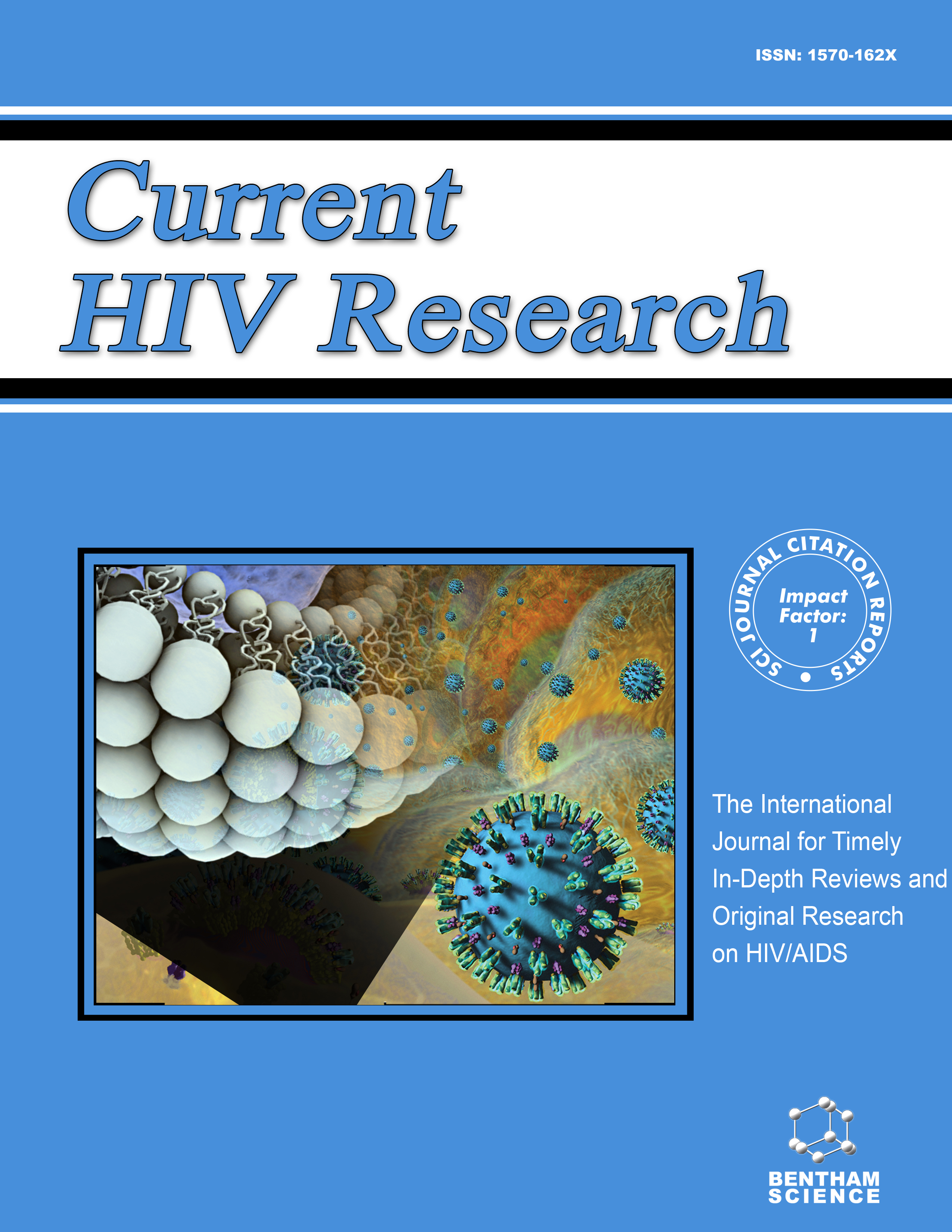- Home
- A-Z Publications
- Current HIV Research
- Previous Issues
- Volume 22, Issue 3, 2024
Current HIV Research - Volume 22, Issue 3, 2024
Volume 22, Issue 3, 2024
-
-
Pill Burden: A Major Barrier to HAART Adherence and Fixed Dose Combinations (FDCS) as its Solution - A Mini-Review
More LessAuthors: Mugisa Simon, Ssebaduka Derrick, Sreya Kosanam and Rajeshwari PasupulaHIV/ AIDS is a global pandemic, one of the most challenging; with no cure for the disease, various therapies available in the form of regimens as Highly Active Anti-Retroviral Therapy (HAART) or simply Anti-Retroviral Therapy (ART) are the only way to manage the disease. The Fixed Dose Combinations (FDCs) concept has been a well-recognised improvement in pharmacotherapy for the treatment of a variety of chronic m Read More
-
-
-
Evaluation of HIV and Syphilis Co-infected Cases, Data from a University Hospital
More LessBackground: HIV and syphilis are sexually transmitted infections with overlapping risk factors, potentially leading to increased HIV transmission and treatment challenges. Understanding the clinical management of syphilis co-infection among people living with HIV is crucial for public health interventions. Objective: This retrospective cohort study aimed to assess the prevalence of syphilis co-infection, clinical characteristics, t Read More
-
-
-
Feasibility of a Mobile Health Intervention for Providing a Continuum of HIV Services for MSM: Pilot Study of the WeTest Program in 3 Cities in China
More LessAuthors: Zhihui Zhu, Xiaoyan Lu, Pan Gao, Xiaodong Wang, Xuejiao Hu, Nianhua Xie, Cong Liu, Yue Zhao, Yanqiu Zhao, Zhen Dai, Hongbo Zhang, Jun Wang, Yehuan Sun, Tao Liu, Shufang Sun, Cui Yang, Nickolas Zaller, Zhihua Zhang and Don OperarioBackground: Men who have sex with men (MSM) in China have a high risk for HIV infection but experience suboptimal rates of HIV testing and service engagement due to various social and structural barriers. We developed a mobile health (mHealth) intervention entitled “WeTest-Plus” (WeTest+) as a user-centered “one-stop service” approach for delivering access to comprehensive information about HIV risk, HIV self-t Read More
-
-
-
Impact of Metabolic Syndrome and Cardiovascular Risk on the Quality of Life of People Living with HIV
More LessBackground: The time elapsed since HIV infection diagnosis (TdiagHIV) affects the quality of life (QoL) and can get worse when chronic illnesses start. Objective: The aim of this study was to analyze the impact of metabolic syndrome (MetS) and cardiovascular risk (CVR) on the QoL of people living with HIV (PLHIV). Methods: Cross-sectional study, with 60 PLHIV followed at a Reference Center in the city of Jataí, Goiás, Brazil. Da Read More
-
-
-
HIV Stigma, Sexual Identity Stigma and Online Coping Strategy of Gay, Bisexual and Queer People Living with HIV: A Moderated Mediation Study
More LessAuthors: Muhammad Ashraff Ahmad, Azmawaty Mohamad Nor and Harris Shah Abd HamidIntroduction: Living with HIV/AIDS is more difficult for gay, bisexual, and queer (GBQ) people as they face stigma on both the disease and sexuality, which puts significant stress on coping with stressors, and online platforms have become an alternative coping channel. Methods: This study investigated the use of online coping strategies in moderating the HIV stigma mediated by sexual identity stigma on mental health in Ma Read More
-
-
-
Evaluating the Relationship between Various Risk Factors and COVID-19 Incidence in People Living with HIV: A Cross-Sectional Study
More LessIntroduction: People living with HIV (PLWH) are more susceptible to acquiring and having serious consequences from COVID-19. The objective of this study was to examine the correlation between COVID-19 infection and other risk factors in these patients. Methods: This is a descriptive-analytical study recruiting 160 PLWH referred to the Behavioral Disease Counselling Centre of Imam Khomeini Hospital in Tehran in 2021 Read More
-
-
-
Prevalence of Risk Factors Associated With Poor Quality of Sleep in People Living with HIV and the Correlation between Quality of Sleep and Cd4+ T Lymphocyte Reconstitution: A Cross-Sectional Study from Turkey
More LessAuthors: Ozge Eren Korkmaz and Figen Kaptan AydoğmuşIntroduction: The prevalence of sleep disorders in people living with HIV (PLWH) is higher than in the general population. Even if viral suppression is achieved with Antiretroviral Therapy (ART), the chronic immune activation and increased inflammation due to immune reconstitution persist. The aim of our study was to determine the prevalence of poor quality of sleep (QoS) and associated risk factors in PLWH and to investigate t Read More
-
Volumes & issues
-
Volume 22 (2024)
-
Volume 21 (2023)
-
Volume 20 (2022)
-
Volume 19 (2021)
-
Volume 18 (2020)
-
Volume 17 (2019)
-
Volume 16 (2018)
-
Volume 15 (2017)
-
Volume 14 (2016)
-
Volume 13 (2015)
-
Volume 12 (2014)
-
Volume 11 (2013)
-
Volume 10 (2012)
-
Volume 9 (2011)
-
Volume 8 (2010)
-
Volume 7 (2009)
-
Volume 6 (2008)
-
Volume 5 (2007)
-
Volume 4 (2006)
-
Volume 3 (2005)
-
Volume 2 (2004)
-
Volume 1 (2003)
Most Read This Month
Article
content/journals/chr
Journal
10
5
false
en


